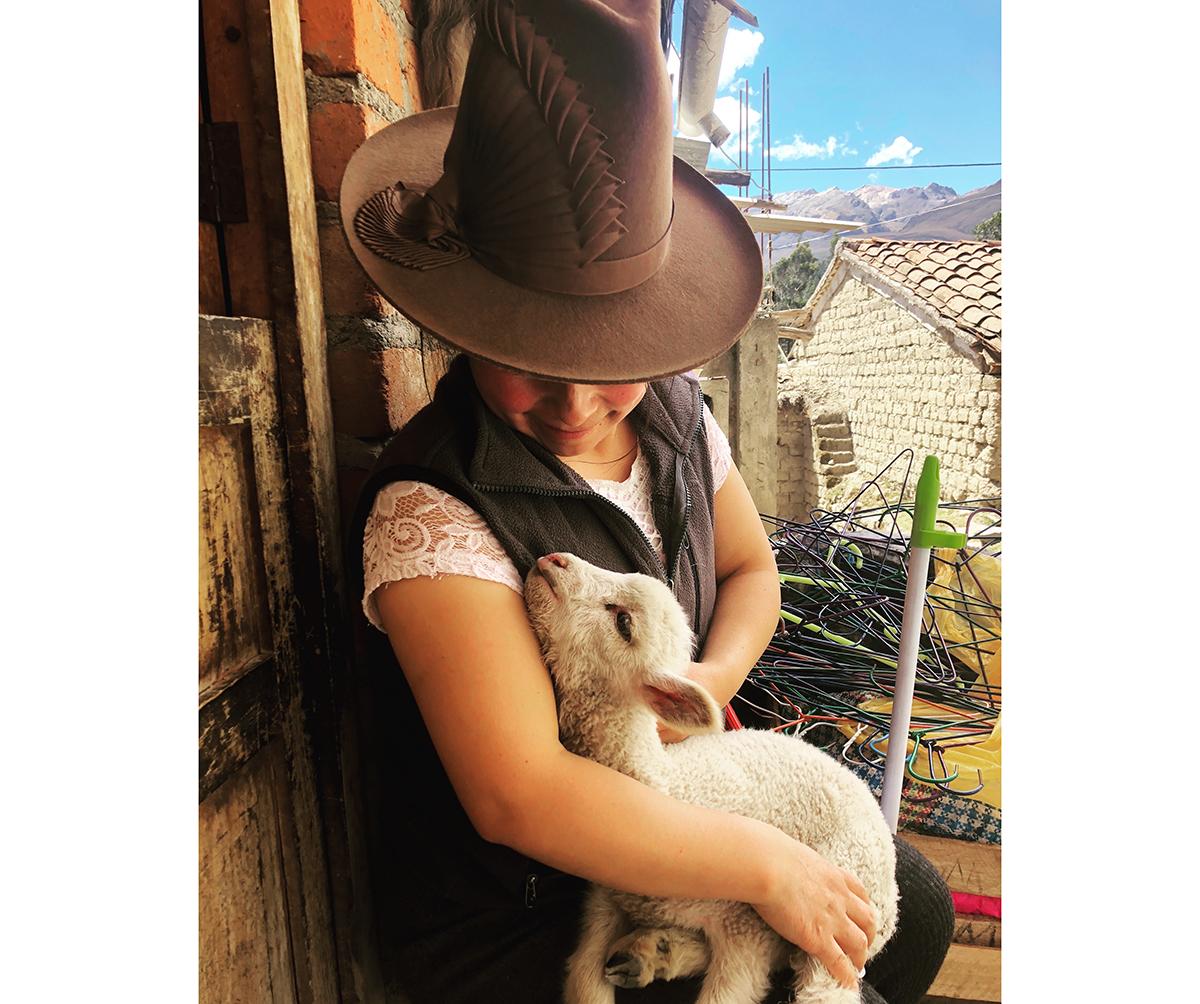
by Holly Moulton, PhD Candidate, Department of Environmental Studies
In the summer of 2019, I took a bus to my friend Rosa’s house, which is located in the middle of a Quechua community within a glacial lake outburst flood hazard zone in the Peruvian Cordillera Blanca. In the family’s garden there is a spectacular view of Andean peaks in all directions. There is a sense of being in an oasis, shielded from the noise of the street right outside the gates and the bustle of the town of Huaraz below. There is no palpable sense that Lake Palcacocha, a glacial lake fed by rapidly melting ice caused by climate change, could overflow the dam constructed to retain it and come barreling down the valley and destroy their home.
Instead, Rosa’s home is a bustling site of construction, weeding, corralling animals, and hastily making school lunches. Rosa’s mother and father now live in a side room off the small, basic kitchen comprised of a single burner, a small wooden table, and a plaster sink. Rosa’s sister Ernestina shares a room with her daughters, and Rosa sleeps in another room off the kitchen. Until recently, Rosa worked a demanding job at a tourist hotel in Huaraz, which she held for nearly 15 years. She left to focus on establishing her own hotel business called Hamariki Inn, which she has built floor by floor over the past five years. Hamariki now towers above the small adobe house that the rest of the family lives in. With running water, flush toilets, rooms with locking doors and large windows, and an airy kitchen and lounge area overlooking the glaciated peaks, it is clear that Rosa has thought through the needs of tourists during her time in the hospitality industry. She told me that she was ready to be her own boss, and that owning and running her own hotel would give her money to support her elderly parents, and additional time to help them around the house. The guests would also provide supplementary income for Ernestina, who planned to sell organic herbs that she grew in her garden to interested clients.
The day before, I sat at a table in the Hotel Central Sucali in Huaraz, Peru, with an international team of glaciologists, hydrologists, city planners, and natural-hazard specialists. As part of a project on integrated water and risk management in the Cordillera Blanca, our group’s task was to work with local officials and professionals to understand the challenges to achieving sustainable water-management practices and glacial lake outburst flood mitigation under the most dire IPCC emissions and warming scenario. This particular scenario looks catastrophic in the region, with all but the highest glaciers predicted to disappear within 20 years, which would contribute to widespread water scarcity and access issues (Motschmann et al.). The mood at the table was somber, with the men noting that “the local population has no environmental sensibility and does not care about flood risks,” and “the rural population is going to decrease with agriculture becoming an unsustainable way of life” (Fieldnotes: August 17, 2018). I was hearing the local population discussed as though it were a single entity, with limited conversations of different experiences of risk and climate change based on gender, and I was also hearing a pervasive sense of how inevitable this worst-case scenario was. Later, when I reflected on Rosa’s experiences, I wondered at the mismatch between both spaces I was involved in: the doom we discussed in the hotel with experts, and the life-giving home and garden experiences I shared with the women in Rosa’s family.
Through my dissertation research, I saw that Quechua women’s everyday adaptations are often seen as diversions from a longer term and more structured plan for adaptation and risk management, or through the lens of a deficit model, where people need to be “sensitized” to risk and educated. And the people who are most often associated with the everyday are Indigenous women, who are frequently engaged in subsistence activities that “must be protected” from climate related risks. As such, my research starts from the feminist position that the household is actually a microcosm for understanding power relations reflected in wider communities and networks of care, even up to the international level (Bee et al.; Buechler; Dyck; Nagoda and Eriksen). I argue for a feminist take on adaptation that centers Quechua women’s futuremaking practices in order to take an intersectional view of climate-related vulnerability and to drill down from emergency to lived experiences of the most marginalized (Amorim-Maia et al.; Kaijser and Kronsell; Mollett and Faria). It is critical to pay close attention to the lives of Quechua women, lives which do not register within the dominant framework of understanding environmental change in the region—that of emergency, ice loss, and disaster.
—Holly Moulton, Environmental Studies, received a 2022 CSWS Graduate Writing Completion Fellowship for this project.
Works Cited
Amorim-Maia, Ana T., et al. “Intersectional Climate Justice: A Conceptual Pathway for Bridging Adaptation Planning, Transformative Action, and Social Equity.” Urban Climate, vol. 41, Jan. 2022, p. 101053. ScienceDirect, https://doi.org/10.1016/j.uclim.2021.101053.
Bee, Beth A., et al. “A Feminist Approach to Climate Change Governance: Everyday and Intimate Politics.” Geography Compass, vol. 9, no. 6, 2015, pp. 339–50. Wiley Online Library, https://doi.org/10.1111/gec3.12218.
Buechler, Stephanie. “Gendered Vulnerabilities and Grassroots Adaptation Initiatives in Home Gardens and Small Orchards in Northwest Mexico.” Ambio, vol. 45, no. 3, Dec. 2016, pp. 322–34. Springer Link, https://doi.org/10.1007/s13280-016-0832-3.
Dyck, I. “Feminist Geography, the ‘Everyday’, and Local–Global Relations: Hidden Spaces of Place-making.” The Canadian Geographer / Le Géographe Canadien, vol. 49, no. 3, 2005, https://onlinelibrary.wiley.com/doi/full/10.1111/j.0008-3658.2005.00092.x.
Kaijser, Anna, and Annica Kronsell. “Climate Change through the Lens of Intersectionality.” Environmental Politics, vol. 23, no. 3, May 2014, pp. 417–33. Taylor and Francis+NEJM, https://doi.org/10.1080/09644016.2013.835203.
Mollett, Sharlene, and Caroline Faria. “The Spatialities of Intersectional Thinking: Fashioning Feminist Geographic Futures.” Gender, Place & Culture, vol. 25, no. 4, Apr. 2018, pp. 565–77. Taylor and Francis+NEJM, https://doi.org/10.1080/0966369X.2018.1454404.
Motschmann, Alina, et al. “Losses and Damages Connected to Glacier Retreat in the Cordillera Blanca.” Climatic Change, 2020, pp. 1–22.
Nagoda, Sigrid, and Siri Eriksen. “The Role of Local Power Relations in Household Vulnerability to Climate Change in Humla, Nepal.” Climate Change Adaptation and Development, Routledge, 2014

